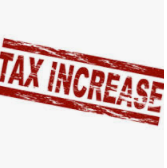
There are actually two higher-education tax credits. The American Opportunity Tax Credit (AOTC) provides up to $2,500 worth of credit for each student, 40% of which is refundable. The credit is equal to 100% of the first $2,000 of college tuition and qualified expenses and 25% of the next $2,000. The AOTC only applies to the first 4 years of post-secondary education.
The other credit is the Lifetime Learning Credit (LLC), which only provides a maximum $2,000 of credit (20% of up to $10,000 of eligible expenses) per family. None of it is refundable, meaning it can only be used to offset the taxpayer’s tax liability, and any additional credit amount is lost.



























Recent Comments